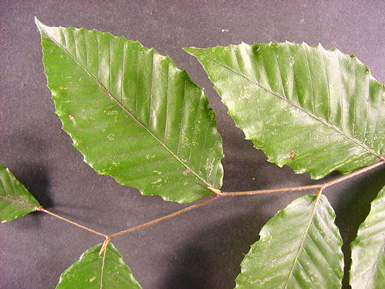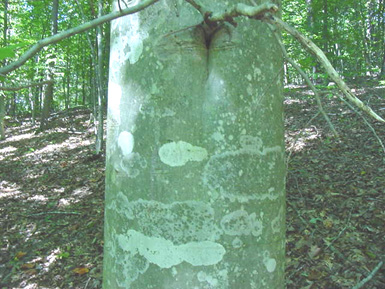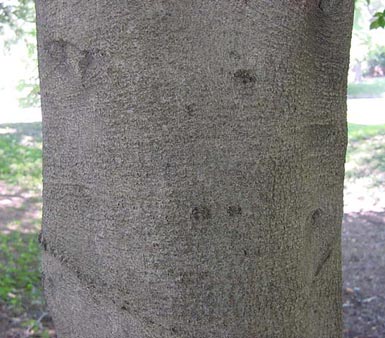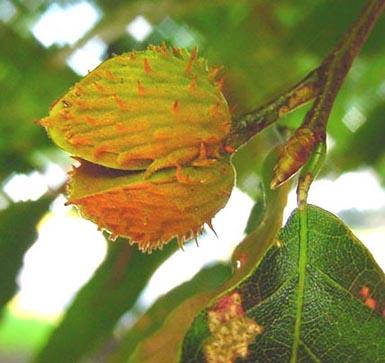Form: This is a large tree reaching 70 - 80 ft. in height and 2 - 3 ft. dbh. The upper branches form a dense crown.
Leaves:
Arrangement: alternate, simple
Shape: lanceolate
Margin: small teeth
Texture: glabrous above and pubescent below
Venation: parallel

Bark: Thin, smooth, and light gray throughout even on trees with large diameters


Twigs and buds: The twig is slender and slightly zigzagging. Buds are light brown and pointed.

Flowers and fruit: Male flowers are borne on globose heads and female flowers are borne on spikes. Fruit is long and triangular and occurs in pairs or 3's.


Distinguishing characteristics: Smooth, light-gray bark, even on larger trees. Very distinguishable long and pointed buds. Look for the parallel venation in the leaves without having doubly serrate margin like the birches--it has small notched serrations instead.
Range: Maine to eastern Wisconsin, south to eastern Texas and east to Florida.
Silvics: very tolerant of shade; moist bottoms; coves, slopes and ridges; often found in clumps produced by root suckering
Ecological and cultural importance: Wood used in veneer, flooring and furniture. Creosote from this species is used in the treatment of various human and animal disorders. Seeds are eaten by a variety of birds and mammals, especially black bear, ducks and deer. Due to their smooth bark, beech trees were favorites of early surveyors for marking as witness trees, and the bark of many beech trees has been carved with initials.